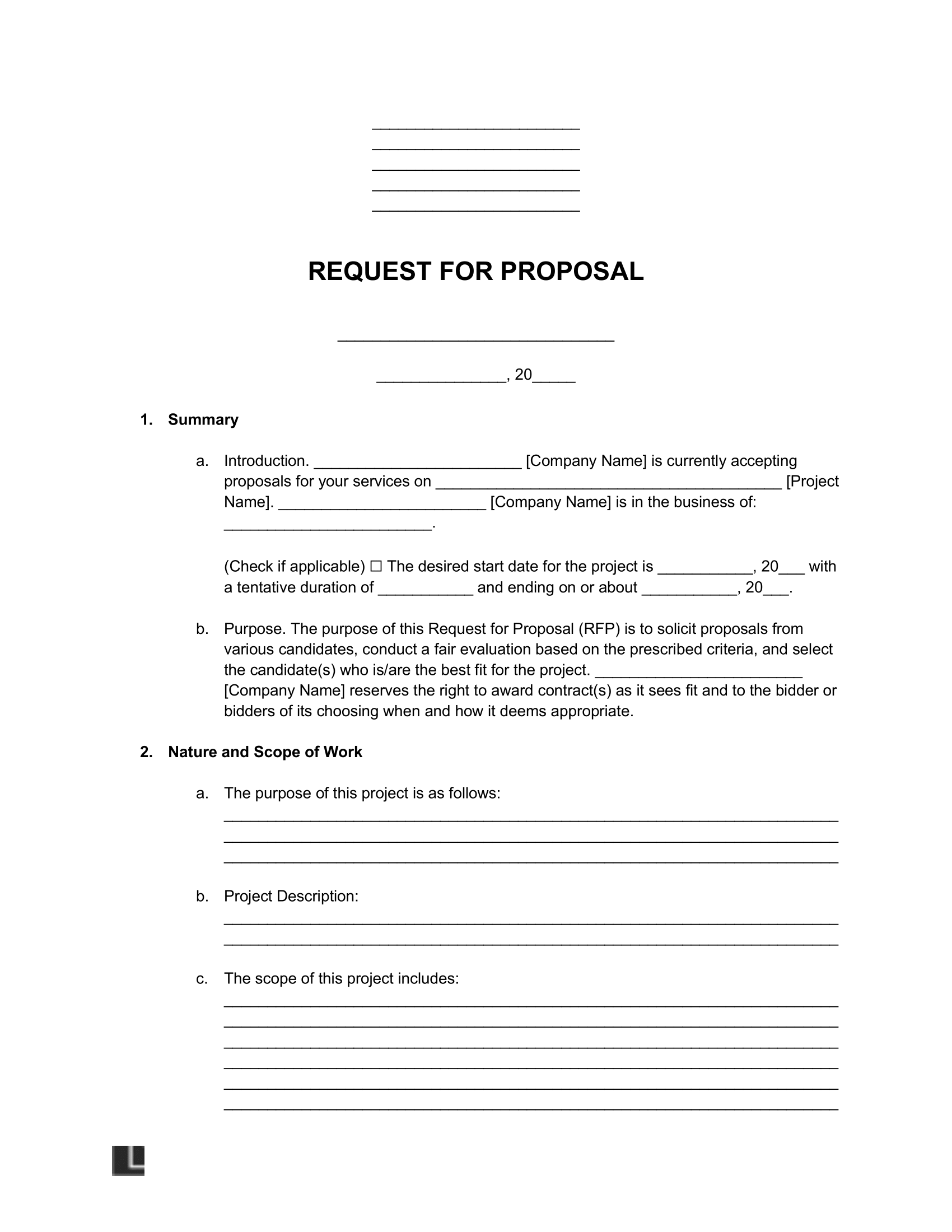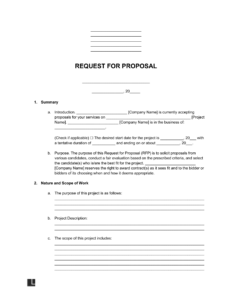Utilizing such a document promotes transparency, fairness, and efficiency in procurement processes. It streamlines the evaluation process, reducing the time and resources required to select the optimal vendor. Clear expectations and standardized submissions minimize ambiguity and potential disputes, leading to stronger vendor relationships and better overall outcomes.

Understanding the components and purpose of this essential procurement tool is critical for organizations seeking competitive advantages. The following sections will explore the key elements typically included, provide guidance on crafting effective solicitations, and offer best practices for maximizing the effectiveness of this process.
Key Components of a Solicitation Document
Effective solicitations require specific information to ensure clarity and facilitate informed responses from potential vendors. The following components are crucial for a comprehensive and successful process:
1. Project Overview/Scope of Work: A detailed description of the goods, services, or project required. This section should clearly articulate the objectives, deliverables, and expectations.
2. Timeline/Schedule: Key dates and milestones, including deadlines for bid submissions, project commencement, and anticipated completion.
3. Submission Requirements: Specific instructions for formatting and submitting proposals, including required documentation and any mandatory forms.
4. Evaluation Criteria: The factors that will be used to assess bids, such as price, experience, technical capabilities, and past performance. Clearly defined criteria ensure transparency and fairness.
5. Terms and Conditions: Standard contractual clauses, payment terms, intellectual property rights, and other legal considerations.
6. Contact Information: Designated point of contact for inquiries and clarification regarding the solicitation.
7. Budget (Optional): While not always included, providing a budget range can help pre-qualify bidders and encourage more realistic proposals.
Careful consideration of these elements ensures a well-defined solicitation, promoting competitive bidding, and ultimately leading to the selection of the most suitable vendor.
How to Create a Solicitation Document
Developing a comprehensive solicitation document requires careful planning and attention to detail. A well-structured document ensures clarity, promotes fair competition, and facilitates informed decision-making.
1: Define the Scope: Clearly articulate the specific needs and objectives. Detailed specifications for goods, services, or project requirements are essential. This includes deliverables, quality standards, and performance expectations.
2: Establish a Timeline: Develop a realistic schedule with key milestones and deadlines. This should include bid submission deadlines, project start and end dates, and any interim deliverables.
3: Determine Evaluation Criteria: Identify the factors that will be used to assess proposals. These may include price, experience, technical capabilities, and past performance. Weighting criteria based on importance provides a structured evaluation process.
4: Develop Standard Templates: Create standardized templates for submissions to ensure consistency and facilitate comparison. Required forms and documentation should be clearly specified.
5: Outline Terms and Conditions: Include standard contractual clauses, payment terms, intellectual property rights, and other legal considerations. Clear terms minimize ambiguity and potential disputes.
6: Specify Submission Instructions: Provide clear instructions for submitting proposals, including format requirements, delivery methods, and contact information for inquiries.
7: Review and Refine: Before issuing the document, thorough review and refinement are essential. Internal stakeholders should review the document for clarity, completeness, and accuracy.
A well-crafted document serves as a critical tool for successful procurement. Thorough preparation and attention to detail result in a transparent and efficient process, ultimately leading to the selection of the most qualified vendor and the achievement of project objectives.
Effective procurement hinges on well-structured documentation that facilitates clear communication and informed decision-making. Standardized templates for soliciting bids ensure a fair and transparent process, enabling organizations to compare proposals effectively and select the optimal vendor. From project scope definition and timeline establishment to evaluation criteria and submission instructions, each component plays a vital role in achieving successful outcomes. Careful attention to these elements streamlines the procurement process, mitigating risks and maximizing value.
Leveraging standardized templates represents a strategic approach to procurement, promoting competition, ensuring compliance, and ultimately contributing to organizational success. As business environments evolve, the strategic use of these tools becomes increasingly critical for organizations seeking to optimize resource allocation and achieve competitive advantages. Embracing best practices in document development and implementation empowers organizations to navigate the complexities of procurement with confidence and efficiency.

